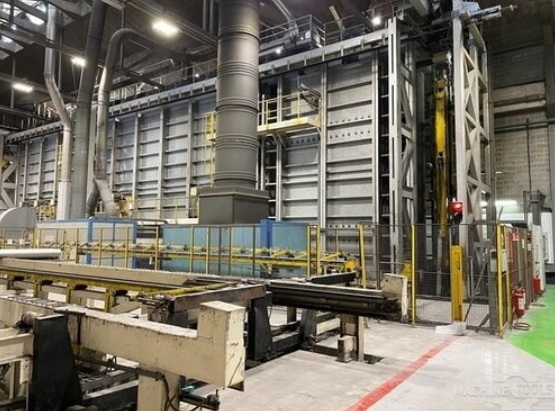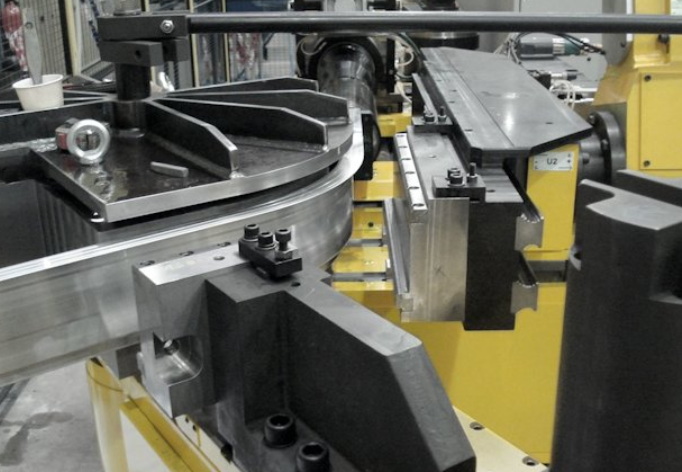Content Menu
● Understanding PVC Board Extrusion Machinery
>> Definition and Purpose
>> Key Features
● The Core Components of PVC Board Extrusion Machinery
● How Does PVC Board Extrusion Machinery Work?
>> Step-by-Step Process
>>> 1. Material Preparation
>>> 2. Feeding
>>> 3. Melting and Mixing
>>> 4. Extrusion through the Die
>>> 5. Calendering and Shaping
>>> 6. Cooling
>>> 7. Haul-off and Cutting
>>> 8. Stacking and Packaging
● Types of PVC Board Extrusion Machinery
>> 1. Rigid PVC Board Extrusion Lines
>> 2. PVC Foam Board Extrusion Lines
>> 3. Wood-Plastic Composite (WPC) Extrusion Lines
>> 4. Specialty Profile Extrusion Lines
● Applications of PVC Board Extrusion Machinery
● Advantages of PVC Board Extrusion Machinery
● Challenges and Troubleshooting in PVC Board Extrusion
>> Common Issues and Solutions
● Innovations and Future Trends in PVC Board Extrusion Machinery
>> 1. Automation and Digital Controls
>> 2. Energy Efficiency
>> 3. Enhanced Material Compatibility
>> 4. Customization and Flexibility
>> 5. Quality Assurance Integration
● Conclusion
● Frequently Asked Questions (FAQ)
>> 1. What are the main differences between single-screw and twin-screw PVC board extrusion machinery?
>> 2. How is the thickness of the PVC board controlled during extrusion?
>> 3. What types of defects can occur in PVC board extrusion, and how are they prevented?
>> 4. Can PVC board extrusion machinery process recycled materials?
>> 5. What maintenance is required for PVC board extrusion machinery?
● Citations:
Polyvinyl chloride (PVC) is one of the most versatile and widely used plastics in the world, found in everything from construction materials to decorative panels. The demand for PVC boards—used for ceilings, walls, furniture, and signage—has driven innovation in the manufacturing processes, with PVC board extrusion machinery standing at the forefront. But what exactly is PVC board extrusion machinery, and how does it transform raw PVC into finished products? This comprehensive article explores the technology, its components, working principles, applications, troubleshooting, and future trends.

Understanding PVC Board Extrusion Machinery
Definition and Purpose
PVC board extrusion machinery refers to a set of industrial equipment designed to convert raw PVC materials into continuous profiles or sheets, such as boards, panels, or foam sheets. The extrusion process involves melting PVC resin, shaping it through a die, cooling, and cutting it into desired lengths. This machinery is essential for mass production, ensuring consistency, precision, and efficiency in manufacturing PVC boards[11][15].
Key Features
- High automation and precision
- Capability to process various PVC formulations (rigid, foam, wood-plastic composites)
- Adjustable output for different board thicknesses and widths
- Energy-efficient operation with advanced temperature and speed controls[15]
The Core Components of PVC Board Extrusion Machinery
A typical PVC board extrusion line consists of several interconnected machines and systems, each playing a critical role in the production process:
| Component | Function |
| Hopper | Feeds raw PVC material (powder or pellets) into the extruder |
| Extruder (Single/Twin Screw) | Melts, mixes, and conveys PVC material through the barrel |
| Barrel and Screw | Heats and plasticizes PVC, moving it towards the die |
| Heaters | Maintain precise temperature for optimal melting and flow |
| Die (Mould) | Shapes the molten PVC into flat boards or specific profiles |
| Calendering Unit | Smooths and calibrates the extruded sheet for uniform thickness |
| Cooling System | Rapidly cools the extruded board to retain its shape |
| Haul-off Machine | Pulls the formed board through the line at a controlled speed |
| Cutting Machine | Cuts the continuous board into set lengths |
| Stacker | Collects and organizes finished boards |
| Control System | Regulates temperature, pressure, speed, and synchronization |
How Does PVC Board Extrusion Machinery Work?
Step-by-Step Process
1. Material Preparation
Raw PVC resin, often blended with stabilizers, lubricants, fillers, and colorants, is prepared according to a specific formulation. For foam boards, a foaming agent is included[7].
2. Feeding
The prepared PVC mixture is loaded into the hopper, which feeds the material into the extruder's barrel[11].
3. Melting and Mixing
Inside the barrel, rotating screws convey the PVC forward. The combination of external heaters and mechanical friction melts the material, ensuring thorough mixing and homogenization[1][14].
4. Extrusion through the Die
The molten PVC is forced through a die (mould) at the barrel's end. The die determines the board's width, thickness, and surface texture. For foam boards, the foaming process occurs as the material exits the die, forming a cellular structure[7][13].
5. Calendering and Shaping
The extruded board passes through calender rolls or shaping dies to achieve precise thickness and surface finish. This stage is critical for dimensional accuracy[2].
6. Cooling
The hot, shaped board is rapidly cooled using air or water baths, solidifying its structure and preventing deformation[6][11].
7. Haul-off and Cutting
A haul-off machine maintains consistent tension and speed as the board moves through the line. The cooled board is then cut to specified lengths by an automated cutting machine[15].
8. Stacking and Packaging
Finished boards are stacked and prepared for inspection, packaging, and shipping.

Types of PVC Board Extrusion Machinery
1. Rigid PVC Board Extrusion Lines
Used for producing solid, non-foamed boards suitable for construction, partitioning, and decorative applications.
2. PVC Foam Board Extrusion Lines
Designed for lightweight, cellular boards with excellent insulation and workability. Commonly used in advertising, furniture, and construction[7][13].
3. Wood-Plastic Composite (WPC) Extrusion Lines
Combine PVC with wood fibers for enhanced strength and natural appearance, often used in outdoor decking and interior panels[12].
4. Specialty Profile Extrusion Lines
Produce custom-shaped boards, panels, or decorative trims for specific industries[4].
Applications of PVC Board Extrusion Machinery
PVC board extrusion machinery supports a wide range of industries and applications:
- Construction: Wall and ceiling panels, partition boards, door boards, cladding
- Furniture: Cabinet boards, decorative panels, shelving
- Advertising: Signboards, display panels
- Transportation: Interior panels for vehicles
- Packaging: Protective sheets, containers
The versatility of PVC board extrusion machinery allows manufacturers to tailor products for diverse markets by adjusting formulations, dies, and processing parameters[2][15].
Advantages of PVC Board Extrusion Machinery
- High Efficiency: Continuous production with minimal waste and high output rates
- Consistency: Uniform thickness, width, and surface finish
- Customization: Ability to produce boards with different colors, textures, and properties
- Cost-Effectiveness: Automated operation reduces labor and energy costs
- Material Versatility: Compatible with various PVC formulations and additives
- Environmental Benefits: Many lines can incorporate recycled PVC, reducing environmental impact
Challenges and Troubleshooting in PVC Board Extrusion
Despite the advanced technology, several challenges can arise in PVC board extrusion:
Common Issues and Solutions
| Issue | Possible Cause | Solution |
| Uneven Thickness | Die misalignment, inconsistent feed | Adjust die, ensure consistent material feed |
| Surface Defects (Roughness, Bubbles) | Poor material mixing, trapped air, incorrect temperature | Improve mixing, degas material, optimize temperature |
| Warping or Deformation | Improper cooling, haul-off speed | Adjust cooling system, synchronize haul-off |
| Color Variations | Inconsistent formulation, overheating | Standardize formulation, monitor temperature |
| Low Melt Strength | Inadequate foaming agent or stabilizer | Adjust formulation, use quality additives |
| Material Degradation | Overheating, long residence time | Lower temperature, increase screw speed |
Innovations and Future Trends in PVC Board Extrusion Machinery
1. Automation and Digital Controls
Modern lines feature programmable logic controllers (PLCs), touch-screen interfaces, and real-time monitoring for precise process control, enhancing productivity and reducing human error[15].
2. Energy Efficiency
Advanced heating systems, optimized screw designs, and intelligent power management significantly reduce energy consumption, lowering operational costs and environmental impact[15].
3. Enhanced Material Compatibility
Machinery is increasingly designed to handle recycled PVC, bio-based additives, and complex formulations, supporting sustainability initiatives.
4. Customization and Flexibility
Quick-change dies, modular components, and multi-layer extrusion capabilities allow rapid adaptation to new products and market demands.
5. Quality Assurance Integration
Inline inspection systems using cameras and sensors detect defects early, ensuring consistent quality and reducing waste.
Conclusion
PVC board extrusion machinery is a cornerstone of modern plastic manufacturing, enabling the efficient, precise, and cost-effective production of a vast array of PVC boards and panels. By understanding the working principles, components, process control, and troubleshooting strategies, manufacturers can maximize productivity and product quality. Ongoing innovations in automation, energy efficiency, and material compatibility are shaping the future of PVC board extrusion, ensuring its continued relevance in a rapidly evolving marketplace.

Frequently Asked Questions (FAQ)
1. What are the main differences between single-screw and twin-screw PVC board extrusion machinery?
Single-screw extruders are simpler and suitable for processing homogeneous PVC formulations, often used with pre-compounded pellets. Twin-screw extruders, especially conical twin-screw types, offer superior mixing and plasticizing, making them ideal for complex formulations with fillers, foaming agents, or recycled materials. Twin-screw machines are preferred for most PVC board applications due to their higher efficiency and product quality[2][8][15].
2. How is the thickness of the PVC board controlled during extrusion?
The thickness is primarily determined by the die gap and the calendering unit settings. Precise control of the extrusion speed, haul-off rate, and cooling process also affects final thickness. Modern machinery uses automated systems to monitor and adjust these parameters in real time, ensuring uniformity across production runs[2][11].
3. What types of defects can occur in PVC board extrusion, and how are they prevented?
Common defects include uneven thickness, surface roughness, bubbles, warping, and color inconsistencies. Preventing these issues involves optimizing material formulation, maintaining consistent temperature and pressure, ensuring proper mixing, and using effective cooling and haul-off systems. Regular maintenance and calibration of equipment are also essential[3][5][11].
4. Can PVC board extrusion machinery process recycled materials?
Yes, many modern PVC board extrusion lines are designed to handle recycled PVC, provided the material is properly cleaned, sorted, and formulated. Using recycled content can reduce costs and environmental impact, but may require adjustments in processing parameters and additives to maintain product quality[8][15].
5. What maintenance is required for PVC board extrusion machinery?
Routine maintenance includes cleaning the barrel and screw, checking heaters and temperature controls, inspecting the die for wear or blockages, lubricating moving parts, and calibrating sensors and control systems. Preventive maintenance schedules help minimize downtime and extend equipment lifespan[11][15].
Citations:
[1] https://www.jwellextrusions.com/introduction-to-the-working-principle-of-sheet-extruder-machine.html
[2] https://www.won-plus.com/blog/pvc-sheet-extrusion-process_b51
[3] https://www.jwellmachine.com/detailed-explanation-of-pvc-foam-board-extrusion-line%EF%BF%BC/
[4] https://www.friendplasticmachine.com/sale-9959813-300mm-plastic-profile-extrusion-machine-for-pvc-ceiling-panel-low-power-consumption.html
[5] https://www.elastron.com/en/12-extrusion-defects-and-troubleshooting-elastron-tpe
[6] https://plastic-extrusionmachines.com/plastic-extrusion-machine-work/
[7] https://www.boardwaybuilding.com/n1872853/Manufacturing-Process-of-PVC-Foam-Board.htm
[8] https://www.jwellextrusions.com/products/pvc-sheet-extrusion-line/
[9] https://www.won-plus.com/blog/extrusion-technology-related-questions-and-answers_b40
[10] https://www.qenos.com/internet/home.nsf/web/RHAT-96N3WM
[11] https://jieyatwinscrew.com/blog/pvc-extruder-machine-everything-you-need-to-know/
[12] https://www.jwellmachine.com/pvc-wood-plastic-extrusion/
[13] https://www.jwellextrusions.com/video/pvc-foaming-board-extrusion-machine.html
[14] https://www.jwellmachine.com/mechanical-principle-of-extruder%EF%BF%BC/
[15] https://anxing-machine.en.made-in-china.com/product/cxorGvaUIpYM/China-Plastic-800-mm-PVC-Door-Board-Extrusion-Machine-PVC-Door-Sheet-Production-Line.html
[16] https://www.beierextrusion.com/what-is-the-principle-of-the-extrusion-machine-and-the-structure-of-each-section/
[17] https://www.jsplasticmachine.com/pvc-extrusion-machine-pvc-foam-board-extrusion-line-product/
[18] https://www.jwellmachine.com/detailed-explanation-of-pvc-foam-board-extrusion-line%EF%BF%BC/
[19] https://jydjx.com/how-does-a-plastic-extrusion-machine-work/
[20] https://www.jwellextrusions.com/video/pvc-foaming-board-extrusion-machine.html
[21] https://www.accextrusion.com/news/how-does-a-plastic-extrusion-machine-work/
[22] https://www.accextrusion.com/news/the-pvc-pipe-extrusion-machines-how-do-they-work/
[23] https://www.cowellextrusion.com/everything-you-need-to-know-about-sheet-extrusion-a-comprehensive-guide/
[24] https://www.youtube.com/watch?v=-cofswRsXHg
[25] https://www.cnchaoxu.com/news-center/270
[26] https://www.prm-taiwan.com/blog/mastering-pvc-twin-screw-extruders-your-3minute-essential-guide_502
[27] https://www.youtube.com/watch?v=ooX9Vp5kzPU
[28] https://sanyimachinery.en.made-in-china.com/product/vSiEaTnbaIUw/China-WPC-PVC-Foam-Board-Production-Line-for-Efficient-Extrusion-Process.html
[29] https://www.caisumachinery.com/a-comprehensive-guide-to-pvc-foam-board-machines/
[30] https://www.cowinextrusion.com/all-about-plastic-extrusion-and-helpful-tips-for-buying-extruder-machinery/
[31] https://66plasticmachinery.en.made-in-china.com/product/bnPUScpDhvRB/China-Production-Line-PVC-Sheet-Production-Line-PVC-Foam-Board-Machinery-Plastic-Sheet-Extrusion.html
[32] https://s3.amazonaws.com/entecpolymers.com/v3/uploads/content/Extrusion-Troubleshooting-Guide.pdf
[33] https://www.accextrusion.com/product/pvc-wpc-foam-board-extrusion-making-machine.html
[34] https://www.benkextruder.com/pvc-pipe-production-line/
[35] https://pubs.aip.org/aip/acp/article-pdf/doi/10.1063/1.4965491/13728906/030021_1_online.pdf
[36] https://www.jwellextrusions.com/products/pvc-door-panel-extrusion-line/
[37] https://best-pm.en.made-in-china.com/product/vnepuBWUHsYR/China-Use-for-PVC-Pipe-Sheet-Profile-Machinery-Extrusion-Conical-Twin-Screw-Barrel.html
[38] https://www.bausano.com/en/press-and-news/common-problems-in-the-plastic-extrusion-process
[39] https://www.leadertw.com/faq.htm






















